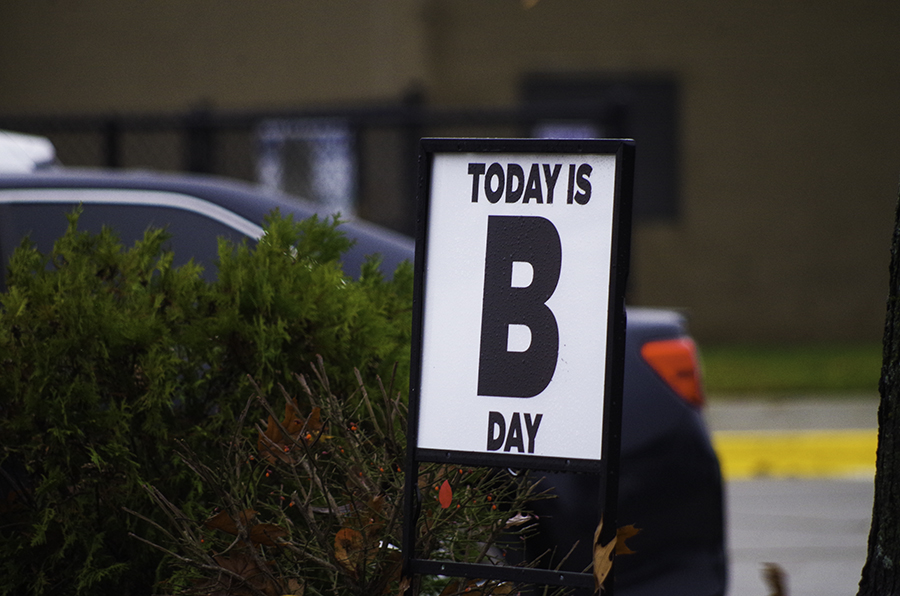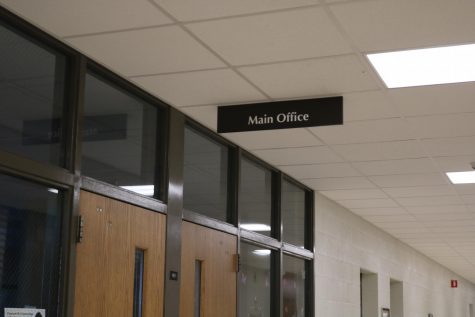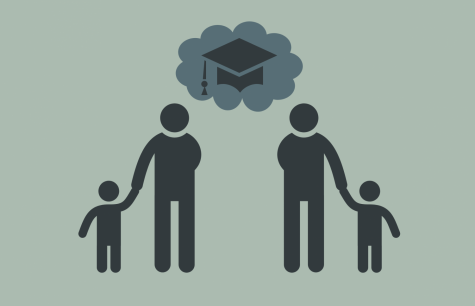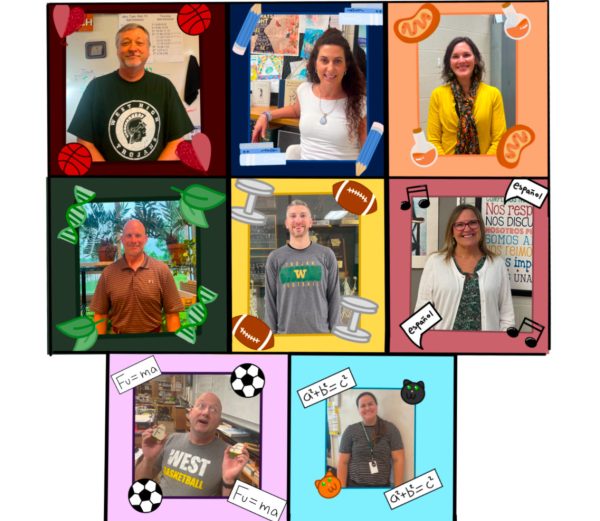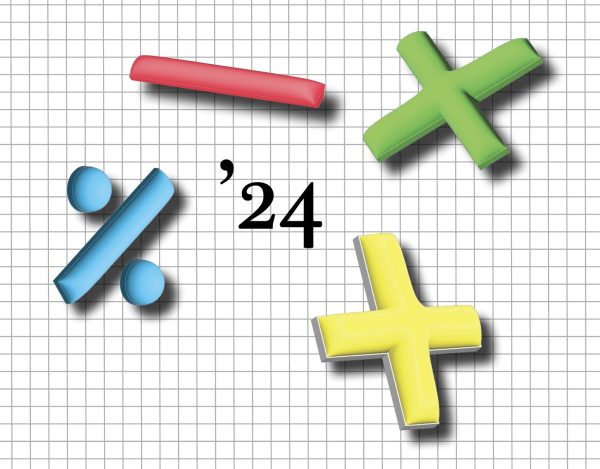The hybrid gap
The ICCSD’s hybrid learning model affects A students and B students differently.
“I think A students will always be slightly ahead in a lot of my classes because of how their weeks start,” said B student Howaida Musa ’23.
WSS is covering the changes in learning models and their subsequent effects on students. To read the previous installment in the series, “On call: students, siblings and learning online,” click here. To read the next installment, “The return,” click here.
When the ICCSD added a hybrid model at the start of the school year, the administration had to decide how they were going to split up the students so that only half were at school at a time.
After a long series of meetings, administrators came up with the present model. A students, those with last names starting with letters A-K go to school on Mondays, Tuesdays and every other Wednesday. The other students with last names L-Z are in the B group, and they go to school Thursdays, Fridays and every other Wednesday.
With B students only being in class at the end of the week, they have had increased difficulty with motivation and getting work done. The problem has largely solved itself as the school year has gone on, and both teachers and students have adapted, but English teacher Kerri Barnhouse had noticed a gap between her A students’ grades and B students’ grades at the beginning of the year.
I felt like the B kids, because they didn’t have my direct instruction in person at the beginning of the week, they seemed less certain about what they should have been doing at the beginning.
— Kerri Barnhouse
“A kids could come to school on Monday and Tuesday or … Wednesday and then I could get them set up so that when I sent them on their way the rest of the week they seemed to know better what to do, asynchronously,” Barnhouse said. “I felt like the B kids because they didn’t have my direct instruction in person at the beginning of the week, they seemed less certain about what they should have been doing at the beginning.”
One of the reasons Barnhouse thinks the problem occurred because she was having both her A group and B group do the same activities on the same day, instead of having synchronous and asynchronous work each week. The instruction that she was giving the B group at the beginning of the week was not substantial enough.
“I was recording myself teaching things and I don’t know if they just weren’t finding it or weren’t doing it or weren’t understanding the importance of doing it, but I felt like the kids showed up at the end of the week and they hadn’t done what they were supposed to do,” Barnhouse said.
Another possible reason for the gap was that teachers received very little direction when it came to how they were supposed to schedule and teach asynchronous and synchronous activities. This is partially a result of the wide variety of classes offered by ICCSD since the curriculum is different for each subject. A science class, for example, needs different instructions than an English class. As a result of the unclearness from the administration, teachers interpreted asynchronous and synchronous work very differently.
Barnhouse chose to keep her A and B students on the same track because the hybrid teachers have to juggle multiple schedules at once.
I have four different classes I teach right now. I sort of feel like I have eight.
— Kerri Barnhouse
“I have four different classes I teach right now,” Barnhouse said. “I sort of feel like I have eight because I have to plan for what I’m doing in person and then make sure that the kids at home can do the same thing and have the materials and instruction they need.”
Many class sizes are drastically different between A days and B days. Some students feel as if they should have had the choice between A days or B days. Hybrid B student Howaida Musa ’23 believes that choosing by last name was a good idea, but there should be options for students to switch if their schedule did not work for them.
“I should be allowed to switch days if it means things will be easier for me academically,” Musa said. “I have friends who also wanted to switch their days but they weren’t able to or they wanted to switch from online to in-person but the counselors wouldn’t let them even though they were struggling.”
I should be allowed to switch days if it means things will be easier for me academically.
— Howaida Musa '23
The only exception to which students were in the A group or the B group was to keep families on the same schedule, even if their last names were different. Giving students the option to choose could lead to problems, such as people switching just to have classes with their friends, but Barnhouse believes that letting some students switch could help balance out the numbers.
“I suppose if they could maybe have a look at the numbers first and … then say, ‘Okay would anybody prefer a different day? Does it work for your family?’ And then maybe switch it to maybe balance the numbers out a little bit more,” Barnhouse said. “But that seems like a logistical issue too … I think everybody made the best decisions they could make under the circumstances.”
Musa wanted to be in the A group because it would start her week out more productively and she would better understand the material she was expected to do asynchronously.
“I prefer a strict and stern start to help me be productive and have a more planned schedule,” Musa said. “I like routines, and the days I don’t have in-person my routine is very weak since I don’t have a set time to do specific things.”
Abby Ghabel ’22 is an A student in the hybrid learning model. She believes that if she were a B student, she would be doing worse academically than she is currently.
For Ghabel, being in the A group is beneficial because starting the week with in-person instruction means she will get a clear understanding of what she is supposed to do on her offsite days. She also finds that starting school on Mondays makes the A schedule feel more like past years than the B schedule.
“I think that’s actually easier for people, instead of looking on a computer finding [assignments], and then going in person,” Ghabel said.
Even though Ghabel prefers being an A student, she still struggles with the motivation to complete assignments in a timely manner.
“When you’re by yourself for two or three days a week, you don’t feel like you need to do it right now or then,” Ghabel said.
Ghabel also believes having an alternating hybrid schedule instead, in which students would attend school every other day, would be much easier. She finds having multiple asynchronous days in a row leads to more procrastination. Musa, on the other hand, likes the current hybrid schedule since it gives her time to run errands. It also keeps routines more consistent for teachers and students.
Math teacher James Kirpes teaches both online and hybrid students. Kirpes has not noticed much of a difference in academic performance between A and B students but has noticed it more between different class periods, which he finds typical as it has happened in past years.
Kirpes believes it’s possible that the hybrid students have an advantage over those online academically. However, he thinks that online students are aware of this and are working hard to be on the level they are expected to be.
“I think… they’re putting in the extra effort they need to overcome the fact that they’re not in hybrid,” Kirpes said.
For Kirpes, it has been a challenge to keep track of the different A, B and online schedules.
“I have been way more organized in my notes and in my classroom because otherwise, I wouldn’t remember where I’m at,” he said.
Kirpes teaches the same material on B days and A days, so all of his hybrid students have the same synchronous activities.
The tricky part is that kind of by definition, the A students get ahead. And then the B students I get caught back up.
— James Kirpes
“The tricky part is that kind of by definition, the A students get ahead. And then the B students I get caught back up,” Kirpes said. “That’s just kind of the nature of how it’s set up.”
The learning gap between A and B students has diminished greatly as the school year has progressed. Some of the solutions Barnhouse came up with to help were to give more detailed instructions to her B group, record more lessons and have all of her resources and assignments in one place.
“[I] created a really clear one-stop-shop for all kids, ‘This is the place where you go, whether you’re in A group or a B group,’” Barnhouse said. “Everybody goes to the same document, and everything is right there.”
This has also helped students who end up missing school or students that have had to quarantine. They’re able to follow along with the calendar and do the asynchronous activities for both the A group and the B group.
Your donation will support the student journalists of West High School. Your contribution will allow us to purchase Scholarship Yearbooks, newsroom equipment and cover our annual website hosting costs.
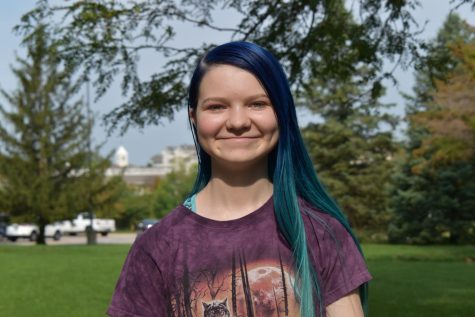
(she/her) Bess Frerichs is the online managing and feature editor. As a senior, this is her third and final year on staff. She enjoys reading, writing...
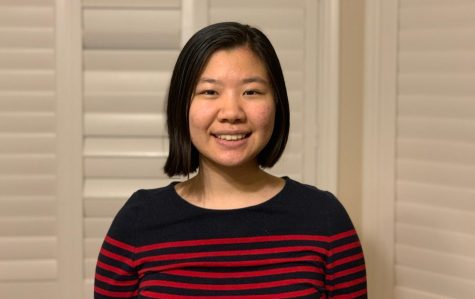
Helen Zhang is a senior at West. She is the columns editor and this is her second year on print staff. In her free time, Helen enjoys baking, reading and...



